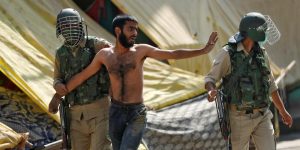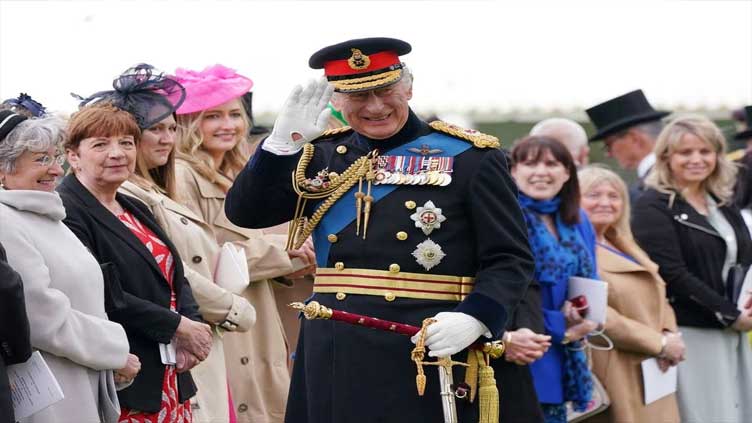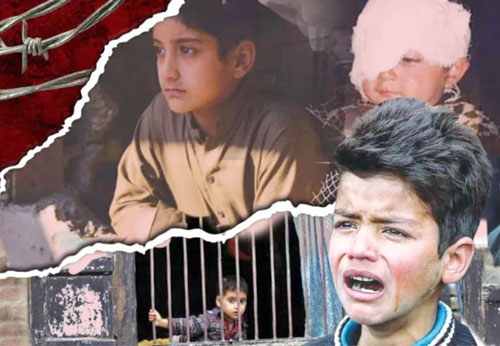
Washington: The extrajudicial killing of unarmed civilians in Indian illegally occupied Jammu and Kashmir by Indian troops is now being noticed by global media as well.
The Daily Beast, a US newspaper, in its fresh publication while making a mention of Shopian and Srinagar fake encounters acknowledged that “There have been some fatal missteps by the [Indian] army, which are just now coming to light.”
Citing the July 18, 2020 Shopian fake encounter in which Indian troops killed three labourers from Rajouri said, During the investigation into the trio’s deaths, Jammu and Kashmir police conducted DNA sampling of the slain, which matched to the families in Rajouri. The three bodies were exhumed from Gantamulla village, located about 41 miles from the capital city.”
The newspaper referred to the police charge sheet and said, “A senior army officer was eventually arrested in the trio’s killings, alongside two of his local sources. The police charge sheet claims the accused army officer had hatched a conspiracy to grab a reward of $27,242 for the killings.”
“Kashmiris and human rights activists have long accused Indian armed forces of targeting innocent civilians and labeling them with the term ‘terrorists’ to claim bounties and to win promotions through the army ranks,” the newspaper added.
Commenting on the latest development in IIOJK, the US newspaper says that ever since the Indian government, led by the Bharatiya Janata Party, revoked Kashmir’s autonomous status, Indian authorities have been trying their best to crush the freedom movement, which India claims is “terrorism” in the Muslim-majority territory.
Regarding the killing of another three youth by Indian troops in Srinagar, The Daily Beast while quoting the families of the martyrs said that the families of victims—Athar, Zubair and Aijaz claim their sons’ deaths are also a case of mistaken identity, and that they were not armed fighters but civilians.
From here on, the newspaper particularly narrates the story of Mushtaq, the father of Athar, one of the three martyrs in following words:
“On the morning after his son’s death, Mushtaq—still unaware that his child had died—was driving his Hyundai i20 towards his house in Bellow village, which is located about 27 miles from the capital city.
When he reached his house, Mushtaq saw that neighbors and other villagers had gathered on his lawn. They had learned about Athar’s killing via social media soon after the shootout with the army.
Mushtaq was called by a police official and asked to identify his son’s body at the Police Control Room in Srinagar, where all the bodies of killed armed fighters are kept for identification.
When Mushtaq, along with his relatives, arrived at the Police Control Room to identify his son, an enormous crowd had already assembled, along with the families of Zubair and Aijaz, who claimed their sons were “at home till last evening and [were] innocently killed in a fake gun battle.”
Mushtaq was allowed to enter the Police Control Room, and to see his son lying dead on a trolley. The Jammu and Kashmir police then threw Athar’s dead body in an armored police vehicle with a thud, alongside the two corpses of his comrades, Mushtaq said.
Mushtaq said he couldn’t bear to see his son’s body being treated in such a way and he broke down with emotion as the compound’s gate shut after the armored vehicle, which headed off towards an unknown destination where the three boys would be buried.
He chased after the vehicle. “I didn’t know what they were going to do with my son’s body. They are tyrants; they could have thrown it to animals or in the water or bury him under the snow,” he said.
The journey to the grave was a difficult one; the road was situated in the middle of mountains in central Kashmir’s Sonamarg region, covered with snow and army checkpoints. Mushtaq and his family—his mother, his wife, his elder brother and his little daughter—managed to reach the cemetery after passing through several security checkpoints.
The police had dug three rough graves with a bulldozer for Aijaz, Zubair, and Athar.
As the dead bodies lying on the floor of the armored vehicle were pulled down for burial, Mushtaq thought about how this was the last time he’d see his son. The temperature had plummeted below freezing with the chilly wind wafting. By the time he tried to see Athar’s face at the graveside, daylight had already faded.
Mushtaq and his brother shouldered the dead body from the vehicle towards the grave. They rested and turned on the flashlight of their cell phones to see him. “I took off my pheran and cleaned his face. There were bruises on his wrists and two bullet marks on his chest,” Mushtaq said.
Two years earlier, in December 2018, Athar had participated in the last rites of a fellow villager in Bellow, Suhail Ahmad—a protester who had been shot and killed by the army along with six other protesters during clashes amid a gunfight in southern Kashmir. At Suhail’s last rites, hundreds had gathered—but for Athar’s burial, only a few were able to participate in his last rites.
Mushtaq and the other families whose sons were killed hope to get their bodies back from the army, sooner or later, to rebury them in their ancestral graveyards and perform the proper last rites, at a real funeral. In the meantime, Mushtaq has dug an empty grave in his ancestral graveyard for his son as a mark of protest.
‘I will wait till his return and bury his body near me—in our village,’ he said. ‘How can I stay quiet when my half-body is under the snow?’” The Daily Beast


